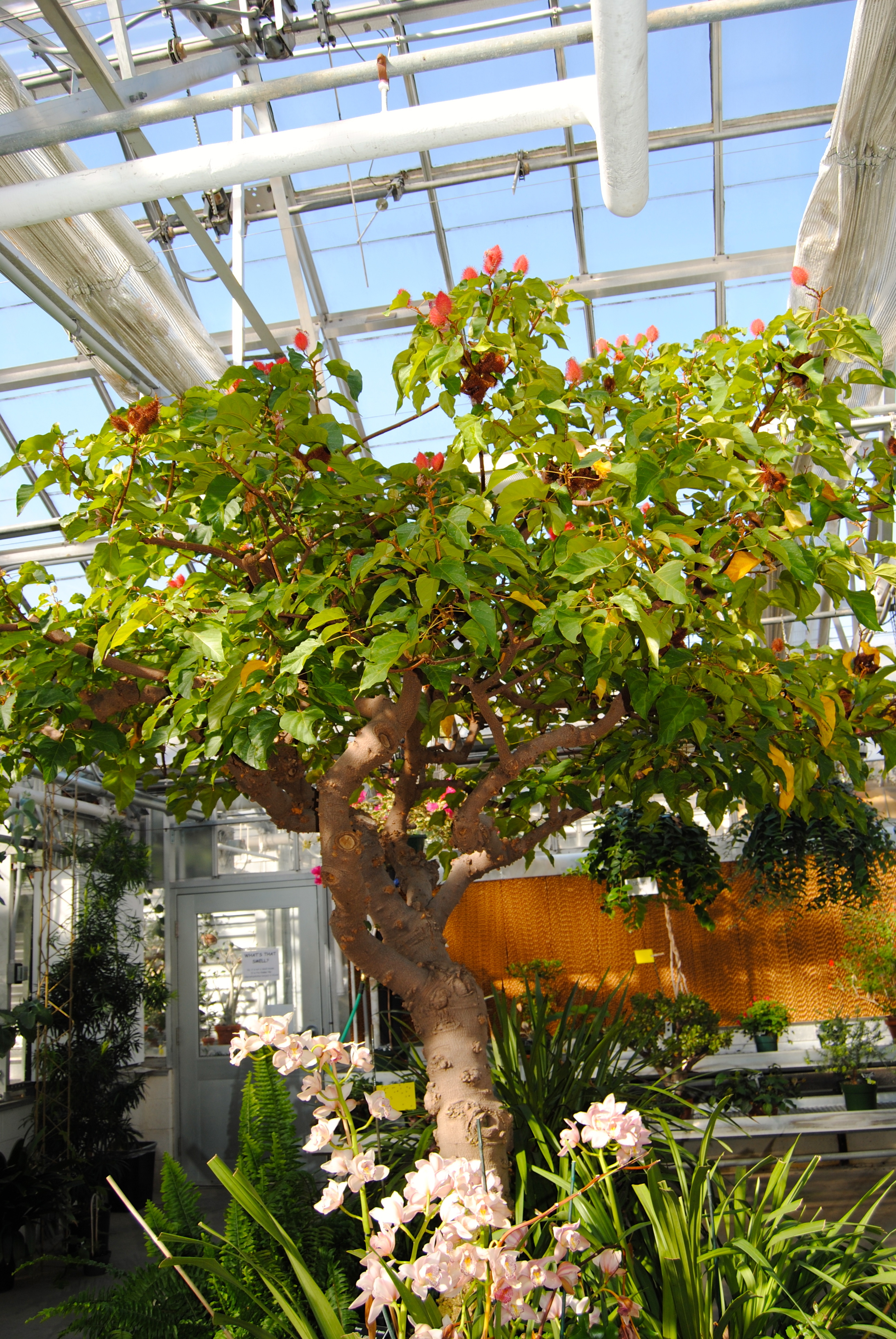Lipstick Tree : Natural History
The lipstick tree is a small tree or shrub three to ten meters tall and lives about fifty years. The trunk can be up to ten cm in diameter. It has tough but smooth bark that is light to dark brown. The inner bark is pinkish with orange sap. The twigs on the lipstick tree are green with rusty red-brown scales. The leaves are round with a heart-shaped base and pointed at the end. They are dark green on top and grey-green on the bottom. They can be eight to twenty cm long and five to fourteen cm wide and are scaly when young.
Bixa orellana produces flowers that are pink, white, or a combination of the two, and are four to six cm in diameter. The flower produces a fruit that has two valves and is coated in long spines or bristles. The fruit that holds the famous annatto seeds can be a variety of colors including scarlet, yellow, brownish-green, maroon, or most commonly bright red. Inside the fruit are about fifty small seeds about five mm in diameter. Honeybees pollinate the flowers of the lipstick tree and the fruit appears five to six months later. It takes roughly two years for the tree to yield any seeds but once it does it will continue to do so every year. When the fruit is finally ripe, it will split and reveal numerous fleshy seeds.
Bixa Orellana is native to the lowlands and tropical valleys of South, Central and Middle America. It flourishes in hot, moist climates, particularly along riverbanks. The tree needs a lot of sunlight, and is sensitive to wind. It is now cultivated in the Philippines, Southeastern Africa, and has been planted as an ornamental all over the world. In the United States, Florida is the state most commonly associated with the ornamental lipstick tree.

